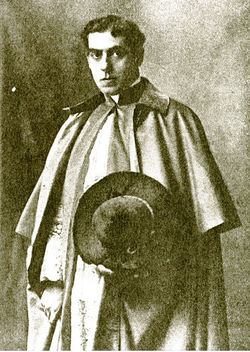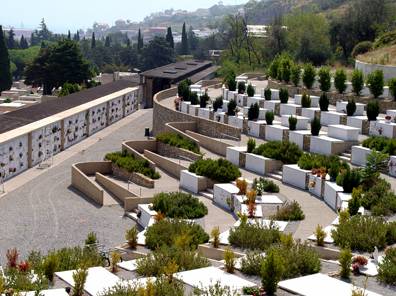He received his education at the Pontifical Academy of Ecclesiastical Nobles in Rome between 1896 and 1899, after serving as a Lieutenant of the Artillery. Secretary of the legation of Colombia in Paris, he received the clerical habit on June 21, 1895, in Paris, while the homily was delivered by Msgr. Alfredo Peri-Morosini, secretary of the Apostolic Nunciature in Paris and future Apostolic Administrator of Canton Ticino, Switzerland.
Sanz de Samper was ordained presbyter on December 17, 1898, in Rome and was named Privy Chamberlain Participantium of Pope Leo XIII on September 26, 1899, and later Prelate of His Holiness on February 11, 1902. He was sent to Mexico to try to establish an Apostolic Delegation and arrived in the named country on March 18, 1902. He departed on July 10 of the same year and was appointed Secretary of the Embassy on August 5, 1903. Privy Chamberlain Participantium of Pope Pius X, for six years, he was also the interim master of the Chamber. In 1905, he was appointed coppiere of His Holiness and was named canon of the Chapter of the Patriarchal Vatican Basilica in 1910.
In May 1910, with Msgr. Rodolfo Caroli, he participated in the reopening of the Cathedral of Canton Ticino after its repair was finished. Appointed Protonotary Apostolic Supernumerary on July 10, 1910, he was elected also as secretary of the Sacred Congregation of the Ceremonial on November 2, 1911. Master of Chamber of His Holiness, between 1914 and 1921, majordome of His Holiness and prefect of the Sacred Apostolic Palace from June 16, 1921 till October 1926, as Majordome, he was one of the Four Prelati di Fiocchetti and had ordinary audiences with the Pope the first and third Tuesdays of each month. Governor of the Conclave of 1922, he heard, from the outside that in the Sistine Chapel the Pope had been elected and ran to give the news to the Pontifical Family. As governor, he was the first, after the cardinals, to pay homage to the new Pope Pius XI. President of the Heraldic Commission of the Pontifical Court and of the Ospizio dei Convertendi of Rome, according to Yves Chiron in "Pie XI: 1857-1939", published in Paris, in 1923 Pope Pius XI wanted to promote him to the cardinalate, but changed his mind when King Alfonso XIII of Spain insisted that he appoint cardinals from South America, although the Pope did not wish to appear to be seen influenced by political considerations.
In 1926, he was abruptly suspended from his position and named majordome emeritus. He testified for the Positio Summarium during the beatification process of Pope Pius X, which was published in 1949. He later moved to Sanremo because of his deteriorating health, where he ultimately died on February 22, 1954, at the age of 80. His body lies interred inside the Armea Cemetery of Sanremo.
He received his education at the Pontifical Academy of Ecclesiastical Nobles in Rome between 1896 and 1899, after serving as a Lieutenant of the Artillery. Secretary of the legation of Colombia in Paris, he received the clerical habit on June 21, 1895, in Paris, while the homily was delivered by Msgr. Alfredo Peri-Morosini, secretary of the Apostolic Nunciature in Paris and future Apostolic Administrator of Canton Ticino, Switzerland.
Sanz de Samper was ordained presbyter on December 17, 1898, in Rome and was named Privy Chamberlain Participantium of Pope Leo XIII on September 26, 1899, and later Prelate of His Holiness on February 11, 1902. He was sent to Mexico to try to establish an Apostolic Delegation and arrived in the named country on March 18, 1902. He departed on July 10 of the same year and was appointed Secretary of the Embassy on August 5, 1903. Privy Chamberlain Participantium of Pope Pius X, for six years, he was also the interim master of the Chamber. In 1905, he was appointed coppiere of His Holiness and was named canon of the Chapter of the Patriarchal Vatican Basilica in 1910.
In May 1910, with Msgr. Rodolfo Caroli, he participated in the reopening of the Cathedral of Canton Ticino after its repair was finished. Appointed Protonotary Apostolic Supernumerary on July 10, 1910, he was elected also as secretary of the Sacred Congregation of the Ceremonial on November 2, 1911. Master of Chamber of His Holiness, between 1914 and 1921, majordome of His Holiness and prefect of the Sacred Apostolic Palace from June 16, 1921 till October 1926, as Majordome, he was one of the Four Prelati di Fiocchetti and had ordinary audiences with the Pope the first and third Tuesdays of each month. Governor of the Conclave of 1922, he heard, from the outside that in the Sistine Chapel the Pope had been elected and ran to give the news to the Pontifical Family. As governor, he was the first, after the cardinals, to pay homage to the new Pope Pius XI. President of the Heraldic Commission of the Pontifical Court and of the Ospizio dei Convertendi of Rome, according to Yves Chiron in "Pie XI: 1857-1939", published in Paris, in 1923 Pope Pius XI wanted to promote him to the cardinalate, but changed his mind when King Alfonso XIII of Spain insisted that he appoint cardinals from South America, although the Pope did not wish to appear to be seen influenced by political considerations.
In 1926, he was abruptly suspended from his position and named majordome emeritus. He testified for the Positio Summarium during the beatification process of Pope Pius X, which was published in 1949. He later moved to Sanremo because of his deteriorating health, where he ultimately died on February 22, 1954, at the age of 80. His body lies interred inside the Armea Cemetery of Sanremo.
Sponsored by Ancestry
Advertisement
Explore more
Advertisement






